 This post features an excellent article by Dr. Mark Hyman on how food intolerance lead to inflammation, which in turn leads to a laundry list of “possible” medical conditions. This list includes Restless Legs Syndrome.
This post features an excellent article by Dr. Mark Hyman on how food intolerance lead to inflammation, which in turn leads to a laundry list of “possible” medical conditions. This list includes Restless Legs Syndrome.
I say “possible” because in the world of inflammation, you never know exactly how it is going to manifest on the surface. For some it may be cancer, for others obesity, for many others depression.
There’s probably not a medical condition that you can name that hasn’t scientifically been proven to be a result of inflammation.
However, as I’ve stated many times before, because you suffer from RLS, you’re kind of fortunate.
Just for a moment, if you can suspend the physical, mental and emotional torture of RLS, try to look at your restless legs as a friendly flare that your body is firing into the night sky, warning you about inevitable dangers that are forming inside your body.
Your restless twitchy legs are giving you a chance to take ACTION before a more life-threatening condition takes hold.
By trying to snuff out this flare with medication, instead of extinguishing it with a proper diet, you are in fact making a decision to NOT listen to your body.
 To better illustrate the decision you’re making, imagine that you’re lying in bed and the smoke alarm goes off.
To better illustrate the decision you’re making, imagine that you’re lying in bed and the smoke alarm goes off.
When the alarm goes off, you probably don’t lie there and grumble about losing valuable sleep nor do you reach down and pull the sheets over your head in order to muffle out the sound.
You INSTINCTIVELY jump out of bed to find out what’s going on.
If it turns out that there is a fire, you gather your family and run out of the house to safety.
If it was just your child making a late night snack, and it was burnt toast that set off the alarm, you can open a window and safely go back to bed.
But when that alarm first went off, all that you knew was that there was a potential life-threatening situation that needed IMMEDIATE action. There was no delay. You got out of bed and investigated RIGHT AWAY to see what had to be done.
Why then, when your body’s smoke alarm goes off, do you ignore it?
I hope that Dr. Hyman’s article will inspire you to take the steps required to start putting out the smouldering fire that has set off your smoke alarm.
 INFLAMMATION: HOW TO COOL THE FIRE INSIDE YOU by Mark Hyman, MD
INFLAMMATION: HOW TO COOL THE FIRE INSIDE YOU by Mark Hyman, MD
HOW CAN YOU, IN a week or less, get dramatic relief from all the symptoms you thought you had to live with the rest of your life?
I’ll get to that in just a minute…
First I’m going to tell you about a hidden culprit that’s linked to everything from obesity to all the chronic diseases of aging. And I’ll give you the key to solving this problem — and unlocking good health.
Over the years, I’ve helped patient after patient achieve good health. But what I’ve asked patients to do is so simple that anyone can do it — and get the same great results.
I’m going to tell you about something I’ve talked about before, but it’s so important that I want to emphasize it again and show you how it’s a hidden cause of poor health.
I’m talking about inflammation.
You’re probably familiar with the pain, swelling, redness, and heat that classically signify inflammation. It’s something just about every one out there has experienced.
Inflammation is part of the body’s natural defense system.
When your body senses foreign invaders, a specific cascade of events is set off in which your white blood cells and some special chemicals called cytokines mobilize to protect you.
This normal type of inflammation is a good thing. It helps your body protect and heal itself. However, when your immune system shifts out of balance, inflammation can run rampant — causing a chronic, smoldering fire inside your body that contributes to disease.
The causes of this type of inflammation are all around you. The sugar you eat, high doses of the wrong oils and fats in your diet, hidden food allergens, lack of exercise, chronic stress, and hidden infections all trigger a raging, unseen inflammation deep in your cells and tissues.
And this inflammation leads to every one of the major chronic diseases of aging — heart disease, cancer, diabetes, dementia and more.
It’s simple.
 If you don’t address inflammation by eliminating hidden food allergens or sensitivities and by eating an anti-inflammatory diet, you will never succeed at effective and permanent health. Hidden sensitivities and allergies to food you eat every day are making you sick and are causing your legs to be inflamed.
If you don’t address inflammation by eliminating hidden food allergens or sensitivities and by eating an anti-inflammatory diet, you will never succeed at effective and permanent health. Hidden sensitivities and allergies to food you eat every day are making you sick and are causing your legs to be inflamed.
When most people think of food allergies, they usually imagine someone eating a peanut and ending up in the emergency room with a swollen tongue, hives, and not being able to breathe. That’s what is called an immediate allergy (also known as an IgE hypersensitivity reaction). This is very serious but not common.
But there is a different type of reaction to foods that is much less dramatic and deadly — but still very troublesome. It is called a delayed allergy (or IgG delayed hypersensitivity reaction). This reaction is much more common and creates a lot of suffering for millions of people. It’s mostly ignored by conventional medicine, yet it plays a HUGE role in many chronic illnesses.
This type of delayed allergic reaction can cause symptoms anywhere from a few hours to a few days after ingestion. It also causes a wide range of problems like weight gain, fluid retention, fatigue, brain fog, irritable bowel syndrome, mood problems, headaches, sinus and nasal congestion, joint pains, acne, eczema, and more.
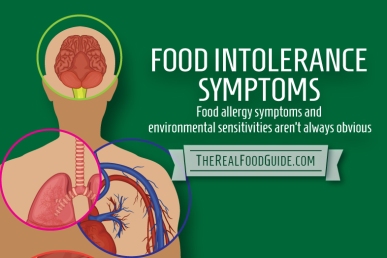 If you hear someone say dismissively, “Oh, you just lost water weight,” they’re right (at first), because eating foods you are allergic to causes inflammation, which leads to swelling and fluid retention.
If you hear someone say dismissively, “Oh, you just lost water weight,” they’re right (at first), because eating foods you are allergic to causes inflammation, which leads to swelling and fluid retention.
Getting rid of this fluid by reducing inflammation is a GOOD thing, not a bad thing. It is what will allow your body to start the healing process so you can achieve permanent weight loss and optimal health.
Consuming a low-allergy diet for just 1 week will help you eliminate the excess swelling and fluid that accumulates in your tissues from food-induced chronic inflammation. Despite criticisms you may have heard about losing ONLY water weight, this is essential for you body to begin to heal and detoxify.
Let me explain a little more.
In my practice, treating food allergies and improving nutrition in general is the single most powerful tool I have to treat, reverse, and even cure hundreds of diseases that conventional medicine fails at miserably.
These include allergies, arthritis, autoimmune diseases, fatigue, sinus problems, hormonal disorders, obesity, high blood pressure, cholesterol, digestive diseases like irritable bowel syndrome, reflux, and colitis, and even mood disorders like depression and anxiety — just to name a few.
You see, we are seeing an epidemic of inflammatory diseases. In fact nearly every modern disease — everything from autoimmune diseases, heart disease, and cancer to obesity, diabetes, and dementia — is caused by inflammation!
These chronic diseases affect 125 million Americans. That means in the average family of three, at least one person has a chronic disease caused by inflammation. In my practice, helping people treat food allergies and food sensitivities is one of the most helpful things I do.
So what have I found after years of testing people for IgG allergies and teaching them how to use elimination diets to help recover from their chronic symptoms and illnesses?
 While everyone is different, there are some foods that irritate the immune system more than others. They are gluten (wheat, barley, rye, oats, spelt, kamut), dairy (milk, cheese, butter, yogurt), corn, eggs, soy, nuts, nightshades (tomatoes, bell peppers1, potatoes, eggplant), citrus, and yeast (baker’s yeast, brewer’s yeast, and fermented products).
While everyone is different, there are some foods that irritate the immune system more than others. They are gluten (wheat, barley, rye, oats, spelt, kamut), dairy (milk, cheese, butter, yogurt), corn, eggs, soy, nuts, nightshades (tomatoes, bell peppers1, potatoes, eggplant), citrus, and yeast (baker’s yeast, brewer’s yeast, and fermented products).
These foods can also cause acute allergic reactions. But those are rare, generally affecting less than 1 percent of the population. When they occur they are serious, permanent, and need to be treated seriously.
But for more than 50 percent of us, there are some foods that just don’t agree with us and prevent vibrant, good health.
How Do You Know If You Are Allergic or Sensitive to Foods?
There are two ways to find out if you are reacting to foods.
One is a blood test for IgG antibodies to foods. This is useful and can pinpoint trouble areas, but it is not 100 percent accurate.
The second is a simple and well-accepted treatment called elimination/ provocation.
This means you get rid of the top trouble foods for 1 to 4 weeks, then reintroduce them one at a time and see what happens. Eliminating foods that cause allergic reactions or sensitivities is the basis for the remarkable results people have — like losing weight, feeling better, and getting rid of chronic symptoms — when they follow the detox phase of UltraMetabolism: The Simple Plan for Automatic Weight Loss.
This program is based on a simple elimination diet: getting rid of gluten, dairy, eggs, and yeast products.
What happens?
Very quickly — in a week or less — people notice dramatic relief from all the symptoms they thought they had to live with the rest of their lives!
 WHY DO YOU BECOME SENSITIVE OR ALLERGIC TO FOODS?
WHY DO YOU BECOME SENSITIVE OR ALLERGIC TO FOODS?
Simply put, your diet, the way you live, and the medications you take are to blame.
These things injure your gut.
They change the bacteria and damage the gut’s lining, which is the critical barrier that keeps your immune system from having to deal with all the garbage, toxins, and allergens inside your intestinal tract. This damage is called a leaky gut.
And so the food particles “leak” across the damaged barrier and your immune system (60 percent of which is right under that lining) starts to attack these partially digested food particles. That’s when you develop IgG food intolerances or allergies.
Let me recap.
When your gut is leaky, partially digested foods get exposed to your immune system, which then creates an abnormal response to something pretty normal — food. That creates many chronic health problems.
FINDING AND FIXING DELAYED FOOD ALLERGIES AND SENSITIVITIES
Just because you have a food allergy or intolerance doesn’t mean you have to suffer with it. In fact, there’s a lot you can do to deal with the problem, re-balance your system, and eliminate chronic symptoms.
Visit my website to find out how to identify food allergies and to discover the tools you need to begin to heal your gut and repair your digestive and immune systems.
When you do these things, you’ll be more resilient and able to tolerate a wider range of foods. The plan is designed to get you started on the road to finding and healing this common obstacle to health.
 Just think about giving yourself the gift of a week long vacation for your body and soul. You might be surprised by what’s on the other side. You’ll be following the same simple program that I use with my own patients to eliminate food allergies.
Just think about giving yourself the gift of a week long vacation for your body and soul. You might be surprised by what’s on the other side. You’ll be following the same simple program that I use with my own patients to eliminate food allergies.
I think you’ll find that the results are remarkable.
But I don’t want you to just believe what I am saying — I want you to prove it to yourself!
To your good health,
Mark Hyman, MD
Mark Hyman, MD, believes that we all deserve a life of vitality—and that we have the potential to create it for ourselves. That’s why he is dedicated to tackling the root causes of chronic disease by harnessing the power of Functional Medicine to transform healthcare. He is a practicing family physician, an nine-time #1 New York Times bestselling author, and an internationally recognized leader, speaker, educator, and advocate in his field. He is the Director of the Cleveland Clinic Center for Functional Medicine. He is also the founder and medical director of The UltraWellness Center, chairman of the board of the Institute for Functional Medicine, a medical editor of The Huffington Post, and has been a regular medical contributor on many television shows including CBS This Morning, the Today Show, CNN, The View, the Katie Couric show and The Dr. Oz Show. http://www.drhyman.com
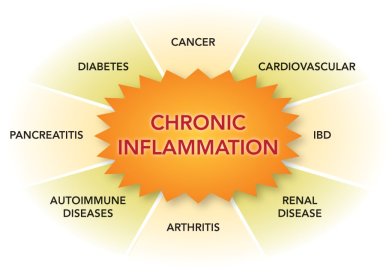 Until recently, there were various competing theories as to the causes of RLS. Prominent theories included:
Until recently, there were various competing theories as to the causes of RLS. Prominent theories included: concurrent conditions (once thought to be the source of RLS).
concurrent conditions (once thought to be the source of RLS).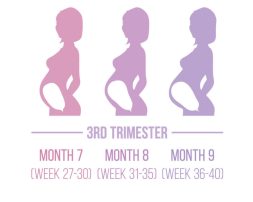 RLS is caused by the higher inflammation found in pregnant women. Many scientific studies show that RLS symptoms are at their worst in the third trimester of pregnancy. Studies also show that inflammation levels tend to be higher in pregnant women, especially the third trimester.
RLS is caused by the higher inflammation found in pregnant women. Many scientific studies show that RLS symptoms are at their worst in the third trimester of pregnancy. Studies also show that inflammation levels tend to be higher in pregnant women, especially the third trimester.
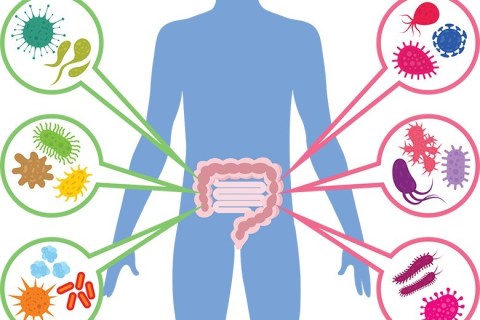

 HOW TO TURN OFF AUTOIMMUNE DISEASE
HOW TO TURN OFF AUTOIMMUNE DISEASE
 Experiments with patients suggest brain stimulation may be a viable treatment
Experiments with patients suggest brain stimulation may be a viable treatment mechanism for RLS rests in the brain’s “move my legs” center and makes even more sense of the relief those with RLS experience when they get up and move them.
mechanism for RLS rests in the brain’s “move my legs” center and makes even more sense of the relief those with RLS experience when they get up and move them. “This basically means that inhibition is reduced or weakened in people with restless legs syndrome compared to people without the condition,” says Rachel Salas, M.D., associate professor of neurology at Johns Hopkins. “The reduced response means that the region of the brain controlling the legs shows increased cortical excitability in the motor cortex.”
“This basically means that inhibition is reduced or weakened in people with restless legs syndrome compared to people without the condition,” says Rachel Salas, M.D., associate professor of neurology at Johns Hopkins. “The reduced response means that the region of the brain controlling the legs shows increased cortical excitability in the motor cortex.”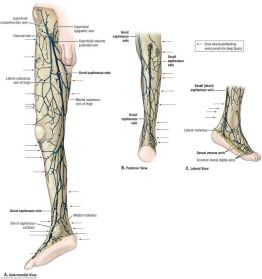 people with severe forms of the condition or at the long-interval paired pulses in the leg,” says Salas. “We are fortunate to have access to such individuals because the Johns Hopkins Sleep Center attracts people worldwide and many who have exhausted treatment options available elsewhere,” she adds.
people with severe forms of the condition or at the long-interval paired pulses in the leg,” says Salas. “We are fortunate to have access to such individuals because the Johns Hopkins Sleep Center attracts people worldwide and many who have exhausted treatment options available elsewhere,” she adds.
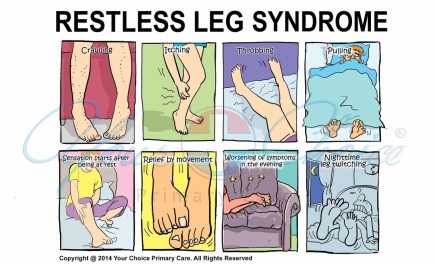
 HOW IS RLS DIAGNOSED?
HOW IS RLS DIAGNOSED?
 SYSTEMIC INFLAMMATION – THE CAUSE OF RESTLESS LEG SYNDROME?
SYSTEMIC INFLAMMATION – THE CAUSE OF RESTLESS LEG SYNDROME?
 THE MEDICAL APPROACH TO TREATING RESTLESS LEG SYNDROME
THE MEDICAL APPROACH TO TREATING RESTLESS LEG SYNDROME
 Jordan Reasoner is a health engineer and author. He was diagnosed with celiac disease in 2007 and almost gave up hope when a gluten-free diet didn’t work. Since then, he transformed his health using the SCD Diet and started SCDLifestyle.com to help others naturally heal stomach problems.
Jordan Reasoner is a health engineer and author. He was diagnosed with celiac disease in 2007 and almost gave up hope when a gluten-free diet didn’t work. Since then, he transformed his health using the SCD Diet and started SCDLifestyle.com to help others naturally heal stomach problems.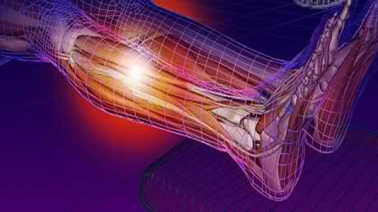 Below is another study that supports the idea of inflammation being at the core of Restless Legs Syndrome.
Below is another study that supports the idea of inflammation being at the core of Restless Legs Syndrome.
 STUDY TWO (excerpt)
STUDY TWO (excerpt)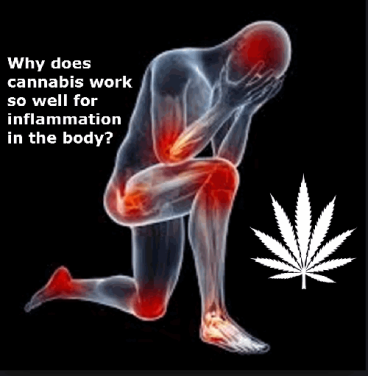 If you have followed this blog for awhile, or have visited my RLS website
If you have followed this blog for awhile, or have visited my RLS website 
 Some subjects reported taking seizure medications clonazepam and gabapentin with unsatisfactory results. All subjects reported prior efforts to alleviate their condition with prescription opiates and dopamine agonists for their RLS. They were ready for a new approach because nothing had worked for them or even made situations worse. Two subjects had experienced compulsive shopping and binge eating as a result of using dopamine agonists.
Some subjects reported taking seizure medications clonazepam and gabapentin with unsatisfactory results. All subjects reported prior efforts to alleviate their condition with prescription opiates and dopamine agonists for their RLS. They were ready for a new approach because nothing had worked for them or even made situations worse. Two subjects had experienced compulsive shopping and binge eating as a result of using dopamine agonists.
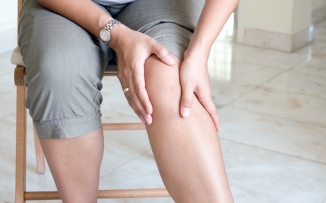 How Does Cannabis Treat Inflammation?
How Does Cannabis Treat Inflammation?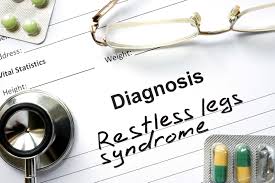 they both work in the body in different ways. Both cannabinoids have demonstrated efficacy in decreasing both the release and production of pro-inflammatory cytokines and also works to decrease the activation of LPS-induced STAT 1 transcription factor, which contributes to some inflammatory processes. However scientists find that CBD is much more potent in addressing inflammation, and for this reason high CBD strains are recommended particularly for those who suffer from extreme inflammation. CBD actually supports the concentration of endogenous cannabinoids which gives the body the ability to self-heal and ward off disease.
they both work in the body in different ways. Both cannabinoids have demonstrated efficacy in decreasing both the release and production of pro-inflammatory cytokines and also works to decrease the activation of LPS-induced STAT 1 transcription factor, which contributes to some inflammatory processes. However scientists find that CBD is much more potent in addressing inflammation, and for this reason high CBD strains are recommended particularly for those who suffer from extreme inflammation. CBD actually supports the concentration of endogenous cannabinoids which gives the body the ability to self-heal and ward off disease. Monday, April 03, 2017
Monday, April 03, 2017 Restless legs syndrome is a seemingly unique condition and the cause is often difficult to pinpoint.
Restless legs syndrome is a seemingly unique condition and the cause is often difficult to pinpoint. cause or exacerbate RLS symptoms, and found that 95% of the health conditions that are associated with RLS have an inflammation or immune component. As further evidence, an elevated blood level of C-reactive protein (a marker of systemic inflammation) has been associated with increased RLS severity.
cause or exacerbate RLS symptoms, and found that 95% of the health conditions that are associated with RLS have an inflammation or immune component. As further evidence, an elevated blood level of C-reactive protein (a marker of systemic inflammation) has been associated with increased RLS severity. This is where vitamin D comes into play. The role of vitamin D in dopamine signaling is only beginning to be investigated, but some evidence indicates that vitamin D could play an important role by increasing levels of dopamine and its metabolites in the brain, as well as protecting dopamine-associated neurons from toxins.
This is where vitamin D comes into play. The role of vitamin D in dopamine signaling is only beginning to be investigated, but some evidence indicates that vitamin D could play an important role by increasing levels of dopamine and its metabolites in the brain, as well as protecting dopamine-associated neurons from toxins. Hi everyone. I apologize that it’s been over 8 months since I posted. A lot of things have been going on. I’ve been mostly sidetracked with work.
Hi everyone. I apologize that it’s been over 8 months since I posted. A lot of things have been going on. I’ve been mostly sidetracked with work.
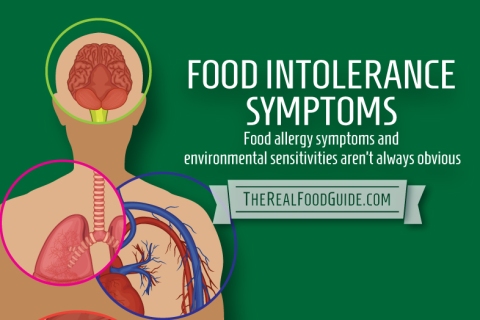
 This post features an excellent article by Dr. Mark Hyman on how food intolerance lead to inflammation, which in turn leads to a laundry list of “possible” medical conditions. This list includes Restless Legs Syndrome.
This post features an excellent article by Dr. Mark Hyman on how food intolerance lead to inflammation, which in turn leads to a laundry list of “possible” medical conditions. This list includes Restless Legs Syndrome. To better illustrate the decision you’re making, imagine that you’re lying in bed and the smoke alarm goes off.
To better illustrate the decision you’re making, imagine that you’re lying in bed and the smoke alarm goes off. INFLAMMATION: HOW TO COOL THE FIRE INSIDE YOU by Mark Hyman, MD
INFLAMMATION: HOW TO COOL THE FIRE INSIDE YOU by Mark Hyman, MD If you don’t address inflammation by eliminating hidden food allergens or sensitivities and by eating an anti-inflammatory diet, you will never succeed at effective and permanent health. Hidden sensitivities and allergies to food you eat every day are making you sick and are causing your legs to be inflamed.
If you don’t address inflammation by eliminating hidden food allergens or sensitivities and by eating an anti-inflammatory diet, you will never succeed at effective and permanent health. Hidden sensitivities and allergies to food you eat every day are making you sick and are causing your legs to be inflamed. If you hear someone say dismissively, “Oh, you just lost water weight,” they’re right (at first), because eating foods you are allergic to causes inflammation, which leads to swelling and fluid retention.
If you hear someone say dismissively, “Oh, you just lost water weight,” they’re right (at first), because eating foods you are allergic to causes inflammation, which leads to swelling and fluid retention. While everyone is different, there are some foods that irritate the immune system more than others. They are gluten (wheat, barley, rye, oats, spelt, kamut), dairy (milk, cheese, butter, yogurt), corn, eggs, soy, nuts, nightshades (tomatoes, bell peppers1, potatoes, eggplant), citrus, and yeast (baker’s yeast, brewer’s yeast, and fermented products).
While everyone is different, there are some foods that irritate the immune system more than others. They are gluten (wheat, barley, rye, oats, spelt, kamut), dairy (milk, cheese, butter, yogurt), corn, eggs, soy, nuts, nightshades (tomatoes, bell peppers1, potatoes, eggplant), citrus, and yeast (baker’s yeast, brewer’s yeast, and fermented products). WHY DO YOU BECOME SENSITIVE OR ALLERGIC TO FOODS?
WHY DO YOU BECOME SENSITIVE OR ALLERGIC TO FOODS? Just think about giving yourself the gift of a week long vacation for your body and soul. You might be surprised by what’s on the other side. You’ll be following the same simple program that I use with my own patients to eliminate food allergies.
Just think about giving yourself the gift of a week long vacation for your body and soul. You might be surprised by what’s on the other side. You’ll be following the same simple program that I use with my own patients to eliminate food allergies. Dr. Terry Wahls is a clinical professor of medicine at the University of Iowa Carver College. She is an avid clinical researcher with over 60 peer-reviewed scientific abstracts, posters and papers to her name.
Dr. Terry Wahls is a clinical professor of medicine at the University of Iowa Carver College. She is an avid clinical researcher with over 60 peer-reviewed scientific abstracts, posters and papers to her name.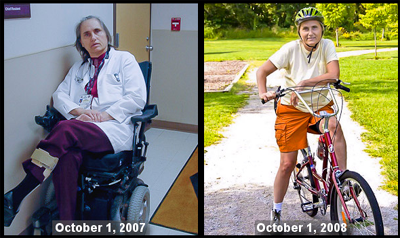
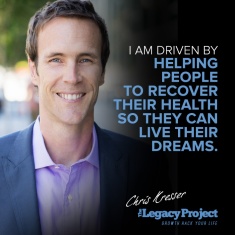 Restless legs syndrome has been associated with numerous conditions involving systemic inflammation and immune dysregulation. (3)
Restless legs syndrome has been associated with numerous conditions involving systemic inflammation and immune dysregulation. (3)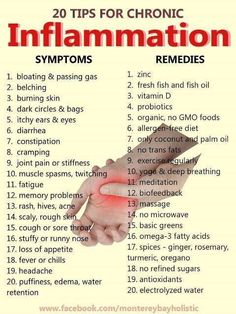 dysregulation, the goal should be to find and treat the root cause. As I’ve mentioned many times in the past, gut infections are often the culprit—even if you don’t have noticeable digestive symptoms—so get your gut tested.
dysregulation, the goal should be to find and treat the root cause. As I’ve mentioned many times in the past, gut infections are often the culprit—even if you don’t have noticeable digestive symptoms—so get your gut tested.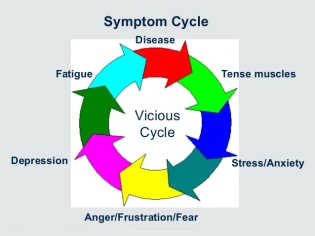 Below is an excerpt from an article titled “Inflammation and Pain Management with Magnesium” by Dr. Mark Sircus, Ac., OMD, DM (P), December 8, 2009
Below is an excerpt from an article titled “Inflammation and Pain Management with Magnesium” by Dr. Mark Sircus, Ac., OMD, DM (P), December 8, 2009 ohol, refined carbohydrates and MSG out of your life, as best you can. Give your body a chance to heal. It doesn’t have to be forever, just give it some breathing room to heal itself.
ohol, refined carbohydrates and MSG out of your life, as best you can. Give your body a chance to heal. It doesn’t have to be forever, just give it some breathing room to heal itself.